Sensorimotor system measurement techniques
- PMID: 16558672
- PMCID: PMC164313
Sensorimotor system measurement techniques
Abstract
Objective: To provide an overview of currently available sensorimotor assessment techniques.
Data sources: We drew information from an extensive review of the scientific literature conducted in the areas of proprioception, neuromuscular control, and motor control measurement. Literature searches were conducted using MEDLINE for the years 1965 to 1999 with the key words proprioception, somatosensory evoked potentials, nerve conduction testing, electromyography, muscle dynamometry, isometric, isokinetic, kinetic, kinematic, posture, equilibrium, balance, stiffness, neuromuscular, sensorimotor, and measurement. Additional sources were collected using the reference lists of identified articles.
Data synthesis: Sensorimotor measurement techniques are discussed with reference to the underlying physiologic mechanisms, influential factors and locations of the variable within the system, clinical research questions, limitations of the measurement technique, and directions for future research.
Conclusions/recommendations: The complex interactions and relationships among the individual components of the sensorimotor system make measuring and analyzing specific characteristics and functions difficult. Additionally, the specific assessment techniques used to measure a variable can influence attained results. Optimizing the application of sensorimotor research to clinical settings can, therefore, be best accomplished through the use of common nomenclature to describe underlying physiologic mechanisms and specific measurement techniques.
Figures





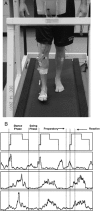
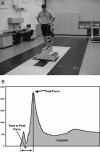
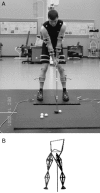
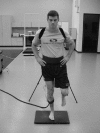
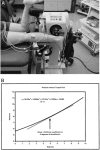
Similar articles
-
The sensorimotor system, part I: the physiologic basis of functional joint stability.J Athl Train. 2002 Jan;37(1):71-9. J Athl Train. 2002. PMID: 16558670 Free PMC article.
-
The Sensorimotor System, Part II: The Role of Proprioception in Motor Control and Functional Joint Stability.J Athl Train. 2002 Jan;37(1):80-4. J Athl Train. 2002. PMID: 16558671 Free PMC article.
-
Telemedicine for the Medicare population: pediatric, obstetric, and clinician-indirect home interventions.Evid Rep Technol Assess (Summ). 2001 Aug;(24 Suppl):1-32. Evid Rep Technol Assess (Summ). 2001. PMID: 11569328 Free PMC article.
-
Isokinetic testing in patients with neuromuscular diseases: a focused review.Am J Phys Med Rehabil. 2013 Feb;92(2):163-78. doi: 10.1097/PHM.0b013e31826ed94c. Am J Phys Med Rehabil. 2013. PMID: 23051758 Review.
-
Review of motor control mechanisms underlying impact absorption from falls.Gait Posture. 2005 Jan;21(1):85-94. doi: 10.1016/j.gaitpost.2004.01.005. Gait Posture. 2005. PMID: 15536038 Review.
Cited by
-
Mobile Phone-Based Joint Angle Measurement for Functional Assessment and Rehabilitation of Proprioception.Biomed Res Int. 2015;2015:328142. doi: 10.1155/2015/328142. Epub 2015 Oct 25. Biomed Res Int. 2015. PMID: 26583101 Free PMC article. Review.
-
Elbow joint position sense after neuromuscular training with handheld vibration.J Athl Train. 2009 Nov-Dec;44(6):617-23. doi: 10.4085/1062-6050-44.6.617. J Athl Train. 2009. PMID: 19911088 Free PMC article.
-
Effects of Ving Tsun sticking-hand training on upper-limb sensorimotor performance in community-dwelling middle-aged and older adults: A randomized controlled trial.Int J Nurs Sci. 2019 Nov 9;7(1):29-34. doi: 10.1016/j.ijnss.2019.11.001. eCollection 2020 Jan 10. Int J Nurs Sci. 2019. PMID: 32099856 Free PMC article.
-
Comparison of Balance, Proprioception and Skeletal Muscle Mass in Total Hip Replacement Patients With and Without Fracture: A Pilot Study.Ann Rehabil Med. 2016 Dec;40(6):1064-1070. doi: 10.5535/arm.2016.40.6.1064. Epub 2016 Dec 30. Ann Rehabil Med. 2016. PMID: 28119837 Free PMC article.
-
The sensorimotor system, part I: the physiologic basis of functional joint stability.J Athl Train. 2002 Jan;37(1):71-9. J Athl Train. 2002. PMID: 16558670 Free PMC article.
References
-
- Lephart S M, Riemann B L, Fu F H, Lephart S M, Fu F H, editors. Proprioception and Neuromuscular Control in Joint Stability. Human Kinetics; Champaign, IL: 2000. Introduction to the sensorimotor system; pp. xvii–xxiv.
-
- Horak F B, Nashner L M, Diener H C. Postural strategies associated with somatosensory and vestibular loss. Exp Brain Res. 1990;82:167–177. - PubMed
LinkOut - more resources
Full Text Sources
